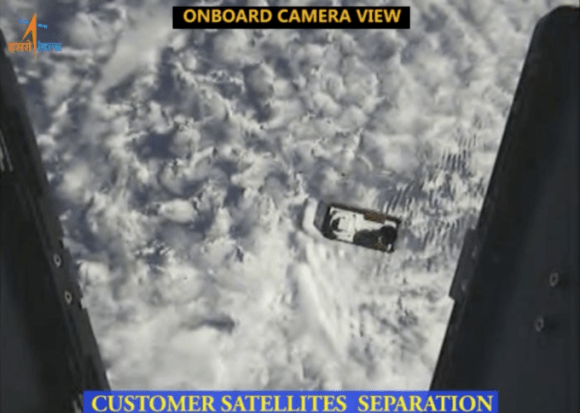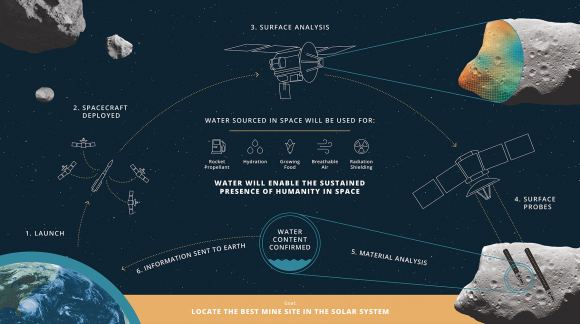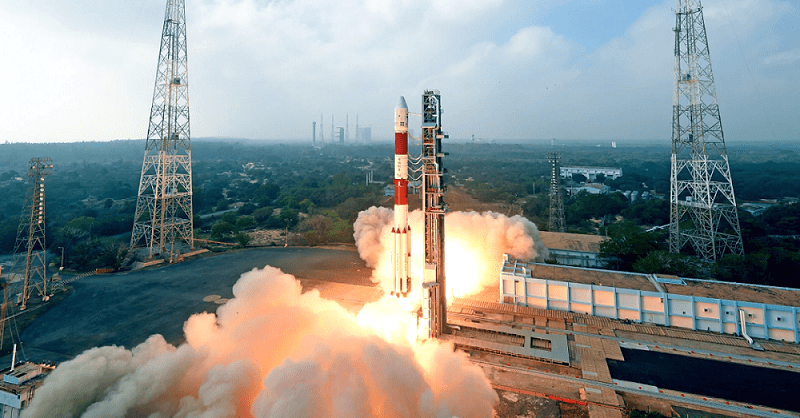In 2009, Arkyd Aeronautics was formed with the intention of becoming the first commercial deep-space exploration program. In 2012, the company was renamed Planetary Resources, and began exploring the ambitious idea of asteroid prospecting and mining. By harnessing Near-Earth Objects (NEOs) for their water and minerals, the company hopes to substantially reduce the costs of space exploration.
A key step in this vision is the deployment of the Arkyd 6, a CubeSat that will begin testing key technologies that will go into asteroid prospecting. Last week (on Friday, January 12th), the Arkyd-6 was one of 31 satellites that were launched into orbit aboard an Indian-built PSLV rocket. The CubeSat has since been deployed into orbit and is already delivering telemetry data to its team of operators on the ground.
The launch was not only a milestone for the asteroid prospecting company, but for commercial aerospace in general. For the purposes of creating the Arkyd 6, the company modified commercial-available technology to be used in space. This includes the mid-wave infrared (MWIR) sensor the spacecraft will use to detect water on Earth, as well as its avionics, power systems, communications, attitude determination and control systems.

This process is central to the new era of commercial aerospace, where the ability to adapt readily-available technology will allow companies to have control over every stage of the development process, as well as significantly reducing costs. As Chris Lewicki, the President and CEO Planetary Resources, said in a recent company statement:
“The success of the Arykd-6 will validate and inform the design and engineering philosophies we have embraced since the beginning of this innovative project. We will continue to employ these methods through the development of the Arkyd-301 and beyond as we progress toward our Space Resource Exploration Mission.”
The company hopes to mount the Space Resource Exploration Mission by 2020, which will involve multiple spacecraft being deployed as part of a single rocket launch. These will be carried beyond Earth’s orbit and will use low-thrust ion propulsion systems to travel to asteroids that have been prospected by Arkyd-301. Once there, they will collect data and collect samples for analysis.
During the course of the Arkyd-6’s flight, 17 elements will be tested in total, the most important of which is the MWIR imager. This instrument will be the first commercial infrared imager to be used in space and relies on custom optics to collect pixel-level data. With this high-level of precision, the imager will conduct hydration studies of Earth to determine how effective the instrument is at sniffing out sources of water on other bodies.

Based on the findings from this initial flight, the company plans to further develop the sensor technology, which will be incorporated into their next mission – the Arkyd-301. This spacecraft will be the first step in Planetary Resources plan to make asteroid mining a reality. Using the same technology as the Arkyd-6 (with some refinements), the spacecraft will be responsible for identifying sources of water on Near-Earth Asteroids.
These asteroids will be the target of future missions, where commercial spacecraft attempt to rendezvous and mine them for water ice. As Chris Voorhees, the Chief Engineer at Planetary Resources, said:
“If all of the experimental systems operate successfully, Planetary Resources intends to use the Arkyd-6 satellite to capture MWIR images of targets on Earth’s surface, including agricultural land, resource exploration regions, and infrastructure for mining and energy. In addition, we will also have the opportunity to perform specific celestial observations from our vantage point in low Earth orbit. Lessons learned from Arkyd-6 will inform the company’s approach as it builds on this technology to enable the scientific and economic evaluation of asteroids during its future Space Resource Exploration Mission.”
All told, there are over 1600 asteroids in Near-Earth space. According to Planetary Resources own estimates, these contain a total of 2 trillion metric tons (2.2 US tons) of water, which can be used for the sake of life support and manufacturing fuel for space missions. By tapping this abundant off-world resource, they estimate that the associated costs of mounting missions to space can be reduced by 95%.
Much like SpaceX’s ongoing development of reusable rockets and attempts to create reusable space planes (such as the Dream Chaser and the Sabre Engine), the goal here is to make space exploration not only affordable, but lucrative. Once that is achieved, the size and shape of space exploration will be limited only by our imaginations.
And be sure to check out this video from Planetary Resources that outlines their Exploration Program:
“The success of the Arykd-6 will validate and inform the design and engineering philosophies we have embraced since the beginning of this innovative project,” said Chris Lewicki, President and CEO, Planetary Resources. “We will continue to employ these methods through the development of the Arkyd-301 and beyond as we progress toward our Space Resource Exploration Mission.”
Further Reading: Planetary Resources

